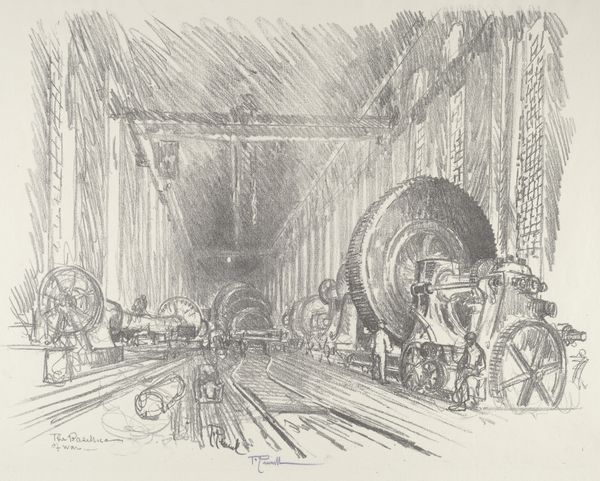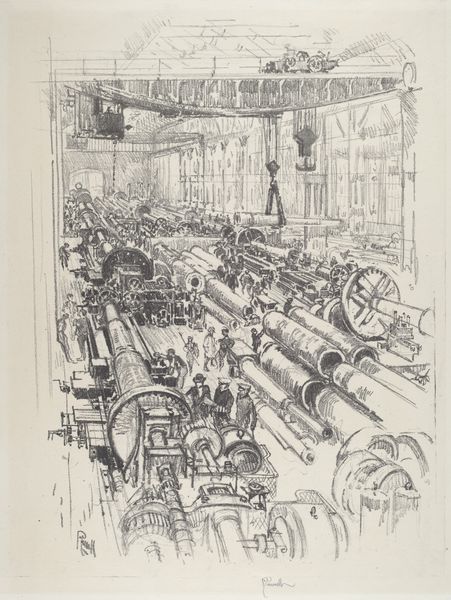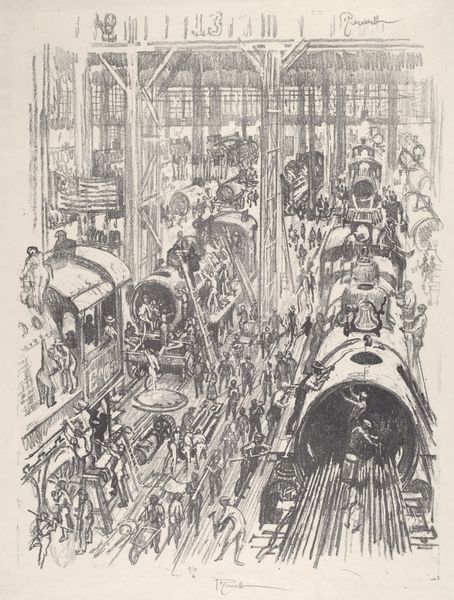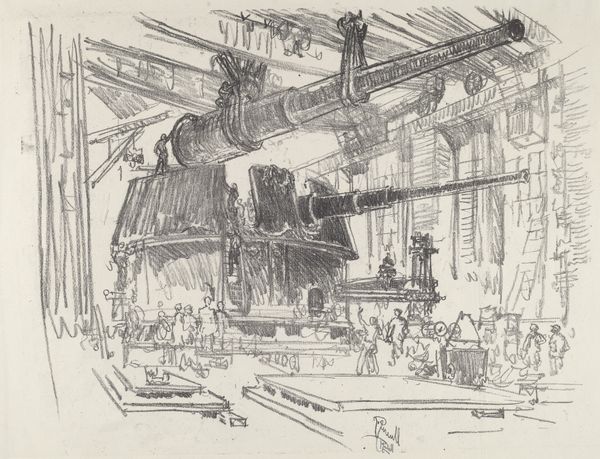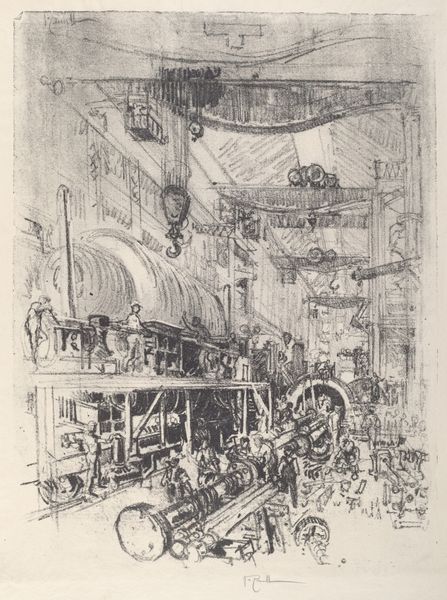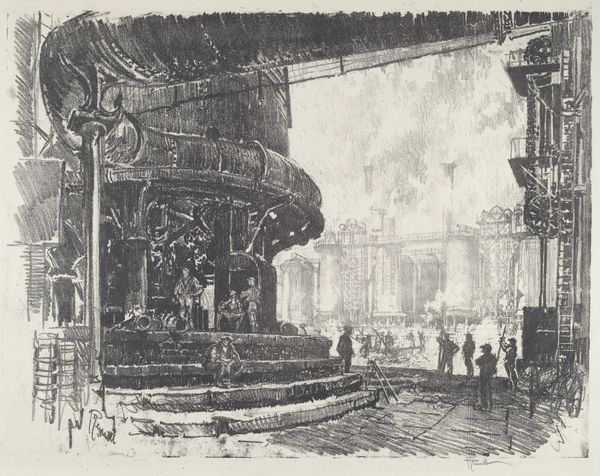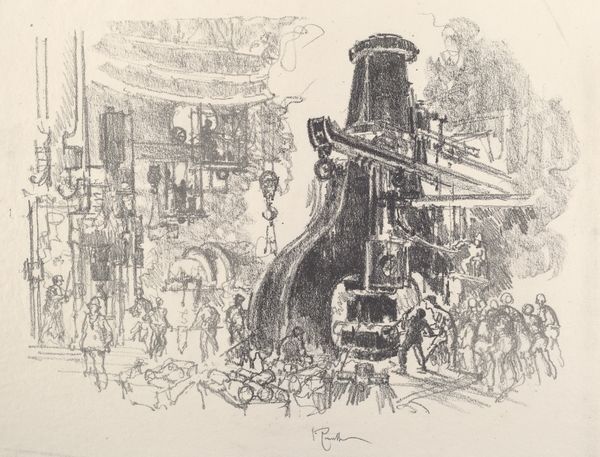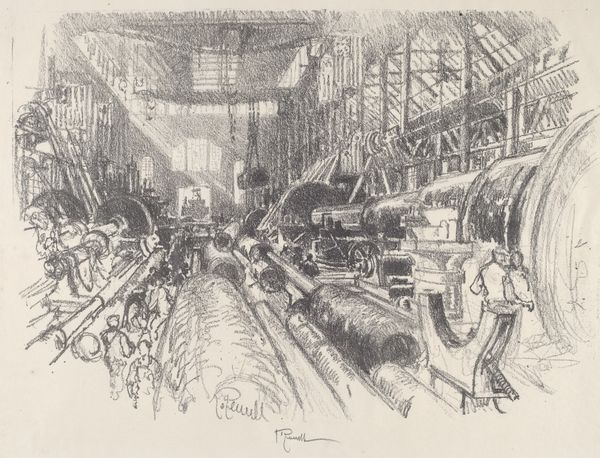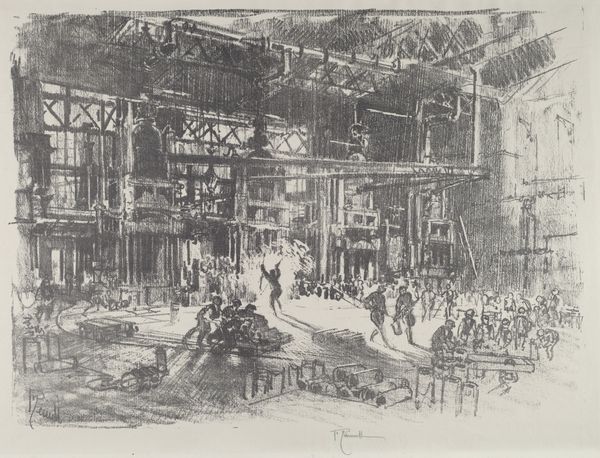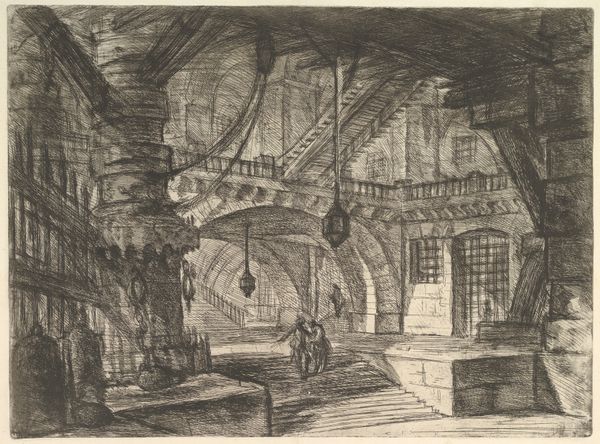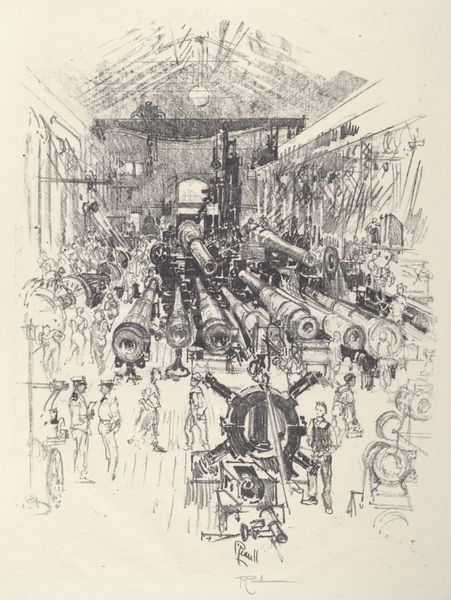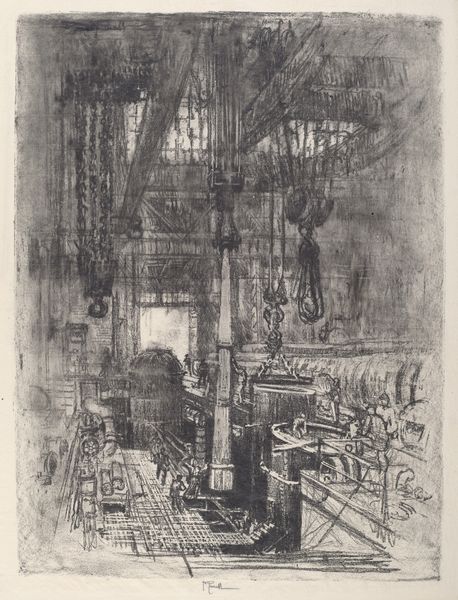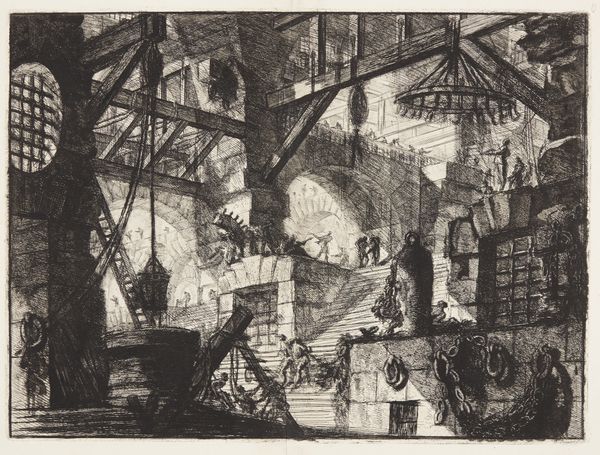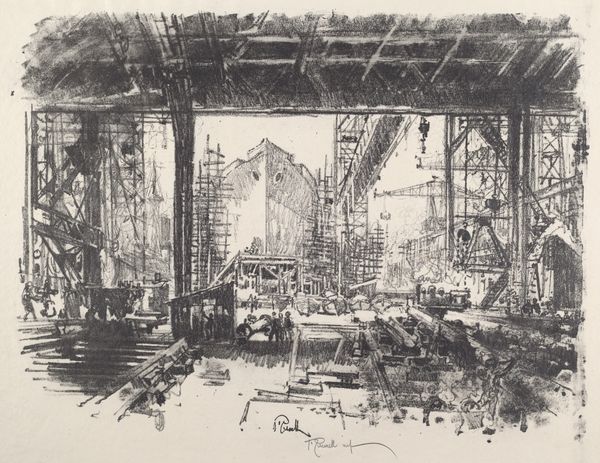
drawing, print, graphite
#
drawing
# print
#
landscape
#
graphite
#
history-painting
#
modernism
Copyright: National Gallery of Art: CC0 1.0
Curator: Let’s talk about Joseph Pennell's “Ready for War,” created in 1916. This lithograph drawing depicts artillery and a train inside what appears to be a vast factory. What strikes you most about it? Editor: The immensity of it. Those artillery pieces are gigantic, monstrous really, looming over those men. It feels oppressive, this premonition of industrialized destruction. There’s a sense of the tragic— almost heroic, I might add. Curator: Exactly. Pennell was deeply concerned with the role of industry in World War I. You know, considering the nature of drawing itself, there's a certain irony in that this sketch made with graphite evokes such heavy subject matter and physical volume of artillery. Editor: I agree! It highlights the processes involved, the sheer logistical undertaking of preparing for industrialized warfare. See those workers pushing and maneuvering, that incredible amount of labour. This lithograph makes explicit the often-hidden human effort and materiality necessary for even creating death machines, not to mention war itself. You feel it wasn’t meant as glorifying as, perhaps, commemorating. Curator: Right. And those quick, frantic lines lend it an urgency. This wasn't a clean, precise, calculated image, but one full of restless movement. Even though the piece depicts preparation rather than direct action, that imminent quality comes through. Editor: The setting matters, too. Inside a factory rather than a battlefield. It takes us away from old ideas of heroism to somewhere where labor becomes inherently tied to mass production and, by extension, warfare. The work exposes this reality by making us examine labor as material for the death machine. Curator: Pennell, despite his later support for the Allied cause, certainly captures something unsettling here, a moment suspended between creation and destruction. It's almost as if he felt a degree of ambiguity toward the subject matter. Editor: It pushes us to consider not just the spectacle of war, but also the processes and, importantly, the human costs embedded in the relentless churn of industrial warfare. Thank you for directing me to analyze Pennell’s depiction from the viewpoint of those moving, pushing and ultimately feeding this war machine. Curator: Precisely, a work deeply embedded within its historical moment that pushes us to question easy narratives even now. Thank you!
Comments
No comments
Be the first to comment and join the conversation on the ultimate creative platform.
